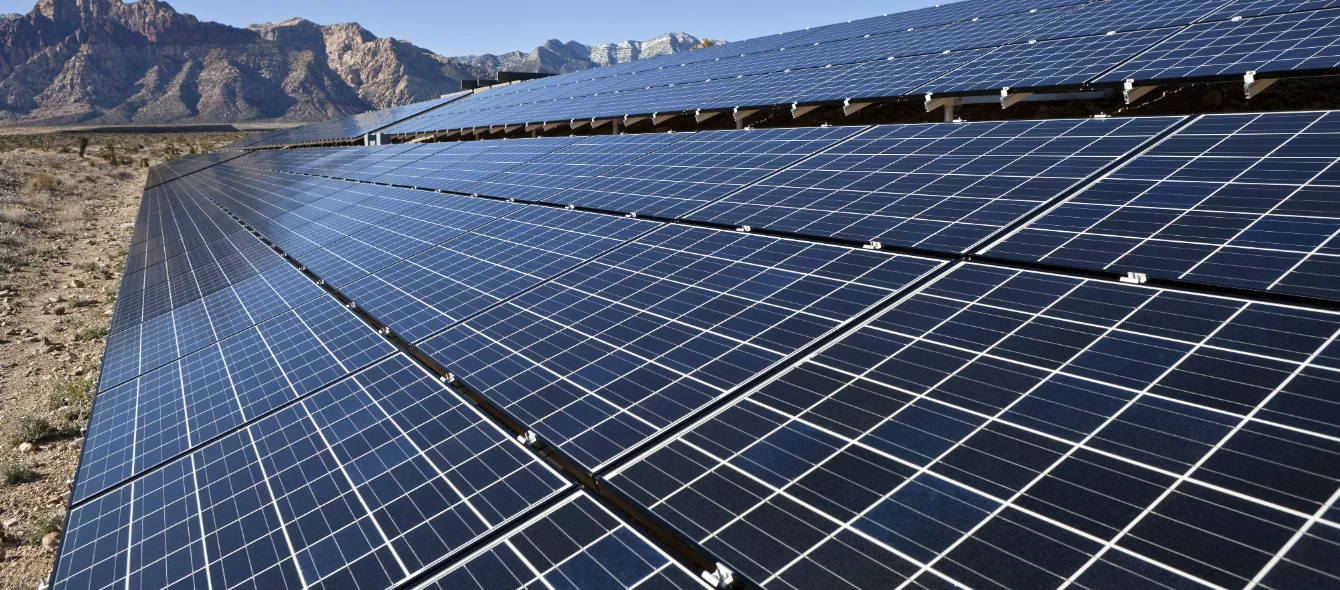In 2020, the US solar sector experienced the biggest boom in its history. This is the finding of the latest analysis by the Solar Energy Industries Association (SEIA) and consulting firm Wood Mackenzie. According to the study, 19.2 gigawatts (GW) in capacity was taken online, representing a 43 percent year-on-year increase. Nearly half of the newly installed electricity generation capacity was in photovoltaic systems. And the authors predict that the solar sector will expand at breakneck speed in the next ten years as well. Total capacity of just under 100 GW at present is expected to more than quadruple to over 400 GW by 2030.
New U.S. electricity-generating capacity additions over the last decade
Source: Wood Mackenzie, Federal Regulatory CommissionAs discovered by the analysis, build-out is not evenly distributed among the states. Over half of the new assets was built in just three of them: California (3.9 GW), Texas (3.4 GW) and Florida (2.8 GW).
Major differences also exist in terms of expansion speed by application. The by far largest number of solar modules was installed by power utilities, with the sector posting an addition of nearly 14 GW – more than ever before. This resulted in a significant increase in large-scale ground-mounted PV arrays. Based on the study, companies had already launched numerous solar projects prior to the corona outbreak and managed to complete them despite the pandemic.
Photovoltaics also experienced a major boom in demand in the residential area, for example on the rooftops of single-family homes and apartment buildings. This application posted a rise of 3.2 GW, or eleven percent, compared to 2019. Experts believe that many took advantage of the lockdown during the pandemic to carry out renovation and modernisation projects. Conversely build-out in the non-residential area – on the rooftops of warehouses and administrative buildings – was an anaemic 2 GW. The crisis triggered by the coronavirus delayed many projects, causing the sector to close the year 4 percent down on the previous one.
Push from prolongation of state subsidies
As the situation eased somewhat towards the winter, the fourth quarter saw a veritable dash to the finish line: A total of 8 GW was added from the beginning of October through to the end of December alone – a performance eclipsing the previous record in the last quarter of 2016 by a whopping 22 percent.
Just before the turn of the year, the sector received some more good news: Original plans envisaged the solar investment tax (a state subsidy) dropping from 26 to 22 percent at the end of 2020 and to 10 percent thereafter. But Congress made a last-minute decision to postpone the reduction by two years.
Since the introduction of the ITC in 2006, the US solar industry has grown by more than 10,000 percent – a development the study believes will gain even more traction in the years ahead in light of the extension and the constant decline in the cost of the technology.
2021 expansion on course for record
As regards large-scale systems, all signs indicate that the build-out record of 2020 will be broken in 2021. Projects with a combined capacity of 11.2 GW are currently under construction. According to Wood Mackenzie, the market is thus right on track to growing capacity by an impressive 17.5 GW.
Whether the boom will persist once the ITC payment drops to 10 percent in 2024 is something the experts do not dare predict. However, they expect another significant upward trend by no later than the end of the decade. After all, this is when many coal and gas power plants will be decommissioned and demand for renewables will rise further.
Expansion boom faces end to subsidies
The authors anticipate that the non-residential sector will also post a record build-out in 2021 – above all due to the status of projects resulting from the crisis triggered by COVID-19 in 2020. However, given that the ITC will be abolished in this area in 2024, expansion will tend to be moderate. Subsidies for homes will also end in 2024. Nevertheless, huge, double-digit percentage growth is expected at least until then. This could see 13.4 percent of all households in the USA living in a building with a PV system, as opposed to 4 percent today.
The report has the speed of expansion picking up considerably across all sectors in the coming ten years. To achieve the prognosticated gain of 324 GW, build-out would have to progress three times faster than in the record year 2020. In light of the increasing focus on renewables in the USA, the experts deem this an entirely realistic scenario.
Photo credit: © shutterstock.com, trekandshoot
